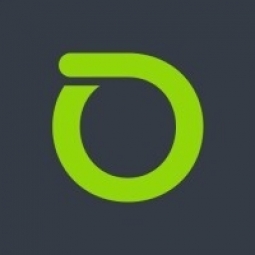公司规模
Large Corporate
地区
- America
国家
- United States
产品
- nGeniusONE® Service Assurance platform
- InfiniStreamNG® software appliances
- vSTREAM® virtual appliances
- NETSCOUT® Visibility as a Service
技术栈
- VMware Horizon virtual desktop infrastructure
- VMware ESX environment
- VMware NSX environments
实施规模
- Enterprise-wide Deployment
影响指标
- Customer Satisfaction
- Productivity Improvements
- Digital Expertise
技术
- 应用基础设施与中间件 - API 集成与管理
适用行业
- 医疗保健和医院
适用功能
- 维护
- 质量保证
用例
- 远程资产管理
- 远程协作
- 远程控制
服务
- 云规划/设计/实施服务
- 系统集成
- 测试与认证
关于客户
这家美国顶级医疗保健组织拥有一个由医院、门诊中心、诊所和专科机构组成的网络,每年有超过 200 万名患者就诊,并拥有 25,000 名敬业的员工。他们通过儿童医院、精神病医院、移植中心、康复医院、癌症护理系统和生物医学研究中心提供著名的专业服务。在 COVID-19 医疗危机期间,他们积极参与创新治疗方案的研究和开发。显然,该组织每天严重依赖其数字应用服务和网络来开展工作。
挑战
该医疗中心的 IT 团队负责管理越来越多用于电子健康记录 (EHR) 的复杂且影响患者的应用程序和系统;包括放射学和医学成像、健康层 7 (HL7) 互操作性、集中血液管理、肿瘤治疗、远程医疗、存储管理和患者身份管理。他们面临的挑战是提供对组织临床应用程序的全面可视性,以便在它们造成中断之前进行故障排除、应用程序服务保证和问题识别。他们还在处理 Nuance PowerScribe 的现有问题,这是一款基于语音的应用程序,为放射学报告提供语音转文本支持。这项服务的问题时断时续,令用户和 IT 部门感到沮丧。由于缺乏对统一通信 (UC) 技术和/或服务依赖关系的可视性,IT 团队无法查明根本原因。从网络角度来看,IT 团队需要可视性来排除故障并为通过其虚拟专用网络 (VPN) 和 VMware Horizon 虚拟桌面基础架构 (VDI) 环境连接的用户提供服务保证。 COVID-19 疫情导致远程医疗服务、协作工具(如 Zoom)和员工在家办公的使用量急剧增加。这使得缩短 VPN 和 VDI 问题解决平均时间 (MTTR) 对 IT 团队来说变得更加重要。了解组织的高速网络及其 VMware ESX 环境也至关重要。
解决方案
经过全面审查后,IT 领导层部署了 NETSCOUT 技术及其创新的托管服务,包括:nGeniusONE、Certified InfiniStreamNG (ISNG) 软件设备(COT)和 vSTREAM 虚拟设备,用于实时了解和排除所有临床和业务应用程序、语音应用程序、VPN/VDI 服务和 VMware NSX 环境的故障。NETSCOUT 的托管服务可视性即服务 (VaaS) 提供持续的 24/7 主动监控、主动监控、故障排除和定期审查会议,以增强专家分析报告。VaaS 团队迅速实施了 nGeniusONE 解决方案,并通过与 IT 团队的密切协商,设计和配置了仪表板工作流程和专家分析报告,从最关键的医疗保健应用程序开始,由精通医疗保健 IT 生态系统的主题专家提供。IT 决定标准化 NETSCOUT 技术和 VaaS 托管服务专业知识,已经获得了故障排除和监控回报。
运营影响
数量效益

Case Study missing?
Start adding your own!
Register with your work email and create a new case study profile for your business.
相关案例.

Case Study
Hospital Inventory Management
The hospital supply chain team is responsible for ensuring that the right medical supplies are readily available to clinicians when and where needed, and to do so in the most efficient manner possible. However, many of the systems and processes in use at the cancer center for supply chain management were not best suited to support these goals. Barcoding technology, a commonly used method for inventory management of medical supplies, is labor intensive, time consuming, does not provide real-time visibility into inventory levels and can be prone to error. Consequently, the lack of accurate and real-time visibility into inventory levels across multiple supply rooms in multiple hospital facilities creates additional inefficiency in the system causing over-ordering, hoarding, and wasted supplies. Other sources of waste and cost were also identified as candidates for improvement. Existing systems and processes did not provide adequate security for high-cost inventory within the hospital, which was another driver of cost. A lack of visibility into expiration dates for supplies resulted in supplies being wasted due to past expiry dates. Storage of supplies was also a key consideration given the location of the cancer center’s facilities in a dense urban setting, where space is always at a premium. In order to address the challenges outlined above, the hospital sought a solution that would provide real-time inventory information with high levels of accuracy, reduce the level of manual effort required and enable data driven decision making to ensure that the right supplies were readily available to clinicians in the right location at the right time.

Case Study
Gas Pipeline Monitoring System for Hospitals
This system integrator focuses on providing centralized gas pipeline monitoring systems for hospitals. The service they provide makes it possible for hospitals to reduce both maintenance and labor costs. Since hospitals may not have an existing network suitable for this type of system, GPRS communication provides an easy and ready-to-use solution for remote, distributed monitoring systems System Requirements - GPRS communication - Seamless connection with SCADA software - Simple, front-end control capability - Expandable I/O channels - Combine AI, DI, and DO channels

Case Study
Driving Digital Transformations for Vitro Diagnostic Medical Devices
Diagnostic devices play a vital role in helping to improve healthcare delivery. In fact, an estimated 60 percent of the world’s medical decisions are made with support from in vitrodiagnostics (IVD) solutions, such as those provided by Roche Diagnostics, an industry leader. As the demand for medical diagnostic services grows rapidly in hospitals and clinics across China, so does the market for IVD solutions. In addition, the typically high cost of these diagnostic devices means that comprehensive post-sales services are needed. Wanteed to improve three portions of thr IVD:1. Remotely monitor and manage IVD devices as fixed assets.2. Optimizing device availability with predictive maintenance.3. Recommending the best IVD solution for a customer’s needs.

Case Study
HaemoCloud Global Blood Management System
1) Deliver a connected digital product system to protect and increase the differentiated value of Haemonetics blood and plasma solutions. 2) Improve patient outcomes by increasing the efficiency of blood supply flows. 3) Navigate and satisfy a complex web of global regulatory compliance requirements. 4) Reduce costly and labor-intensive maintenance procedures.

Case Study
Cloud-based healthcare solution for Royal Philips
Royal Philips wanted to launch its cloud-based healthcare solution HealthSuite Digital Platform in China to deliver services to help cope with challenges related to urbanization and population growth. Philips wanted to achieve this goal by combining mobile, cloud computing and big data technologies. To bring this platform and product to market, Philips required cloud computing and local technical service capabilities in China, in addition to a flexible IT infrastructure that could handle user requests.








